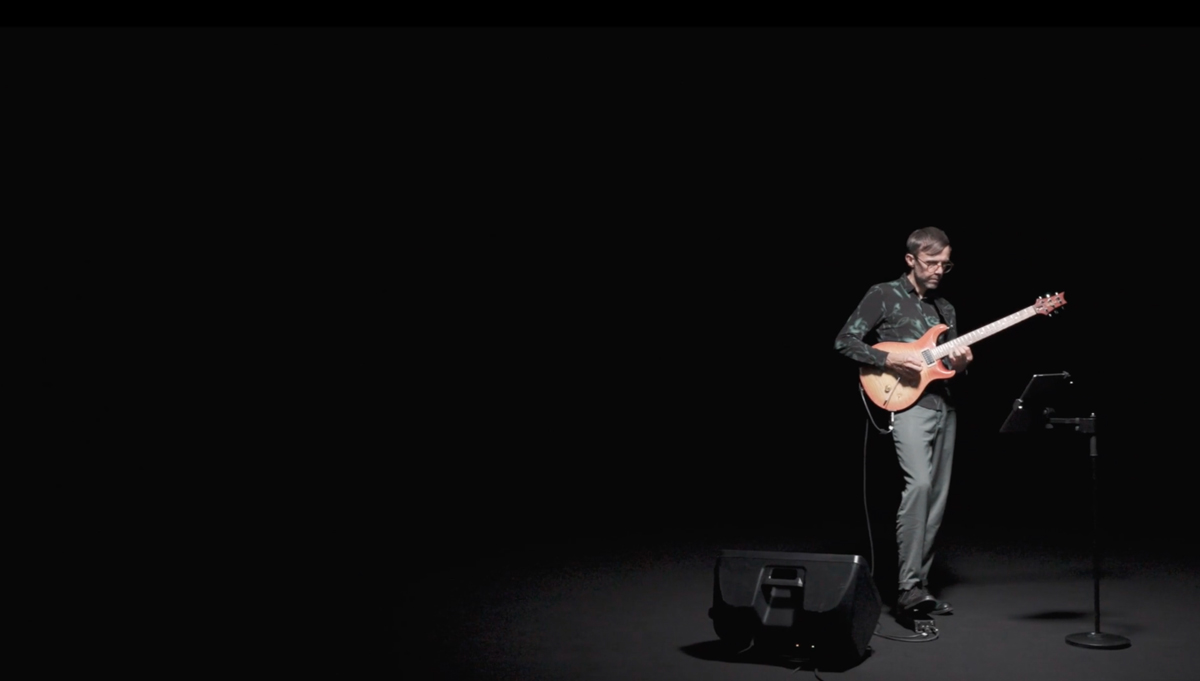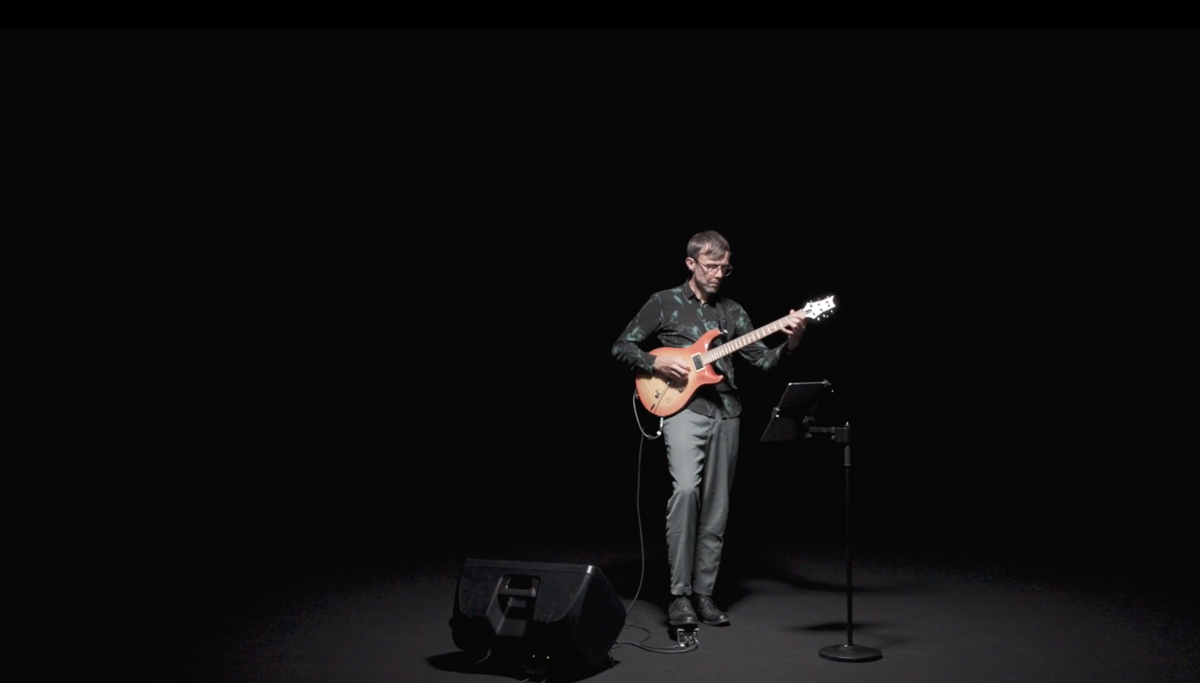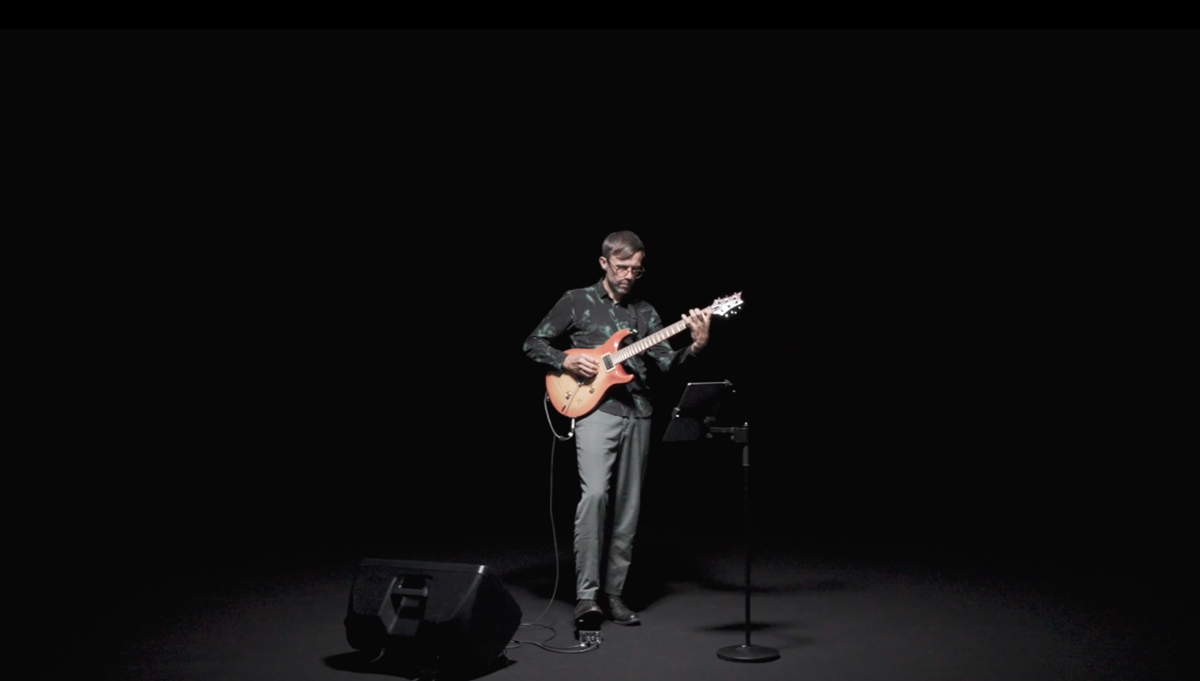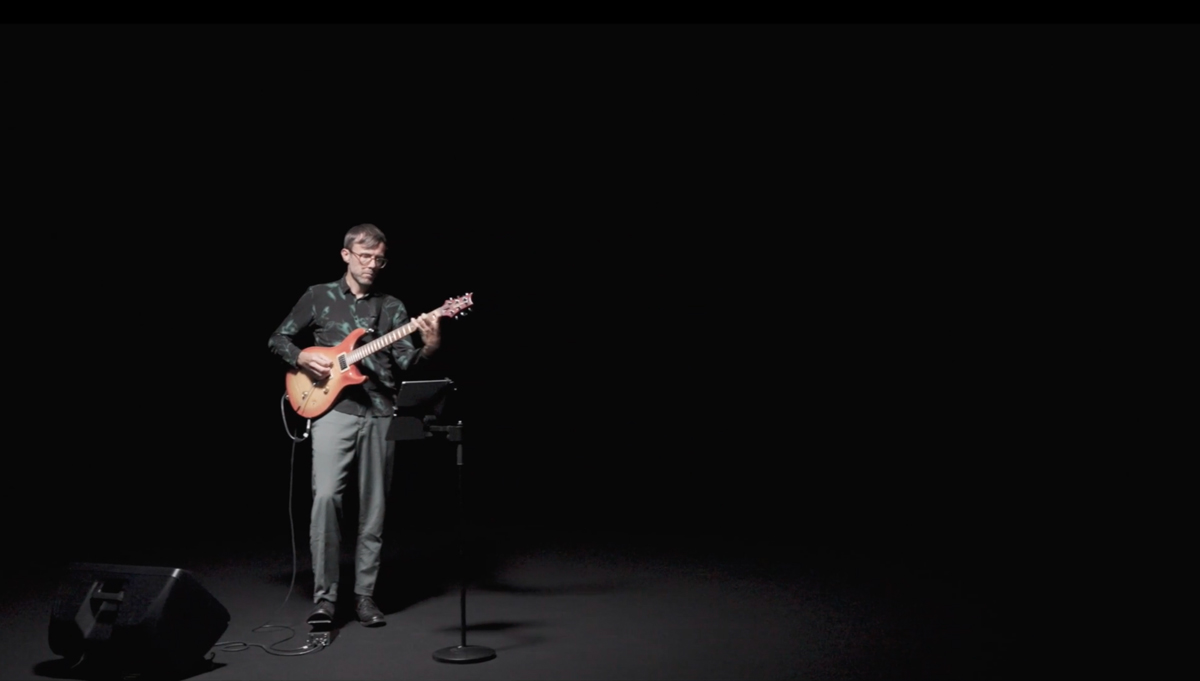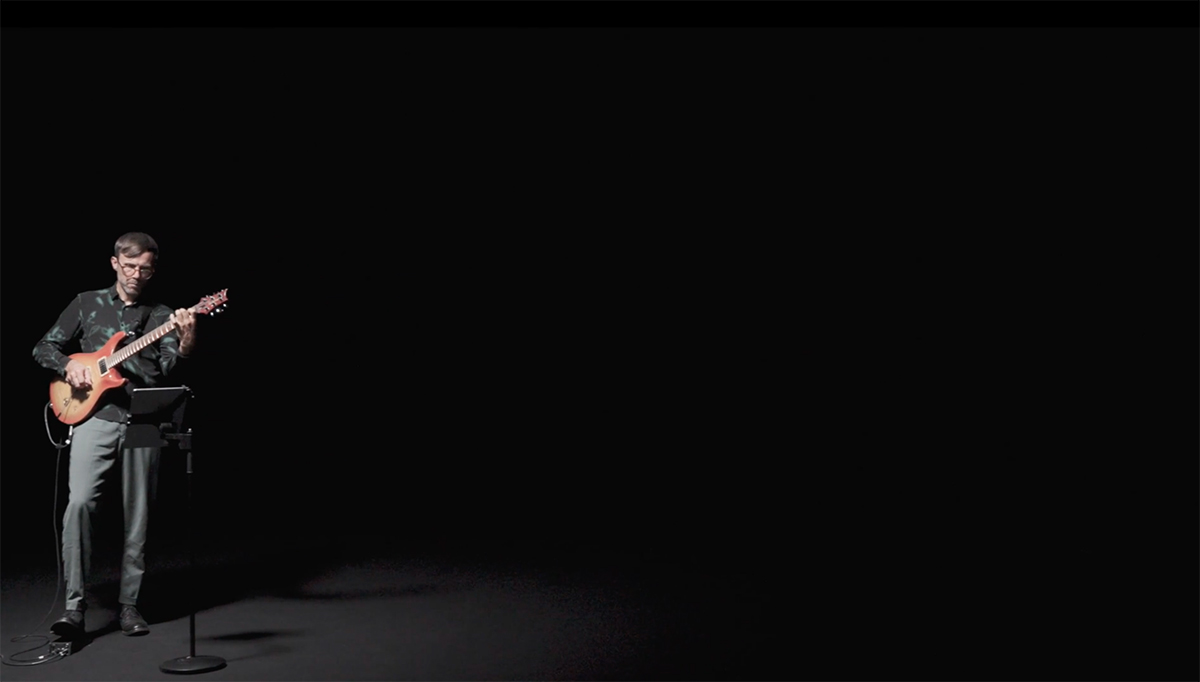1-37
—
1-127
by Peter Ablinger
—
2023
MICHEL LORAND – TOM PAUWELS (Electric guitar)
Film HD color film, 16:9, stereo sound/5.1, 24’
1-37 is a film based on Peter Ablinger’s musical composition 1-127. The score can be described quite simply: an electric guitar descends a scale of some three octaves. At one point, the scale is interrupted by an urban “noise,” during which the guitarist plays a very complex composition, a kind of musical translation of the city’s hubbub suddenly erupting. After the interruption of this previously recorded din, the scale continues descending. There is a pause of several seconds, then everything begins again, with a slightly different scale and a very different splinter of noise. Each time it is the same thing and each time it is different: scale, noise, scale. This work by Peter Ablinger for electric guitar, played by Tom Pauwels for the film, is from the listener’s point of view, so transparent to be almost opaque. It is not music in the term’s usual sense. It is all about the perception of time linked to the sequence of these different musical sequences. The camera glides from left to right, from black to black, systematically for every sequence, each one of an identical duration, 37 seconds. In the original version 1-127, these sequences are repeated 127 times. The number of repetitions is not fixed.
For the film, it was decided to concentrate on a series of 37 sequences in relation with the connection of each one. “To perceive noise, for Ablinger, is immediately to perceive something in noise: ‘[everyone] hears his own melodies therein, and can rightfully say that they are contained in it.’
By laying an abstract grid over a recording of noise (street noise, the noises of nature, even speech), rationalizing that noise with the help of computer software into pitches and rhythms, and transcribing the results for musical instruments, any environmental sound can be reflected in a more ‘musical’ surface. What we hear, then, is an externalization, a making concrete of the inward experience of hearing the unhearable. The results can vary widely in the fidelity of the reproduction of their origins, depending on the fineness of the divisions of time and of pitch. The recorded street noises that break into the oblivious tranquility of the scales are excerpted from Ablinger’s Das Buch der Gesänge (1997-9), a nearly five-hour compilation of one hundred recordings of ambient Berlin sounds. The guitar, loud and distorted as an additional agent of sudden change from the placid scalar surroundings of these interruptions, does the best it can to keep up, filtering the densely overlaid urban cacophony into a spasmodically jagged series of pitches that are often barely perceptible from within the general chaos. The scale eventually resumes, inevitably: it maps out all those pitches, and all those stretches of time, left out of the excerpted streets of Berlin. ‘That which one sees or hears is the complement of that which one does NOT see or hear,’ Ablinger writes; it is not a question of foreground and background, precisely, but of obverse and reverse, statement and counterstatement, act and consequence, blank canvas and wall.”
1Evan Johnson, “Like the Clear Blue Sky, Peter Ablinger’s 33 – 127,” liner notes for the CD 33 – 127, Mode Records MDE206, 2009; https://ablinger.mur.at/werk2000_1-127text.html.
—